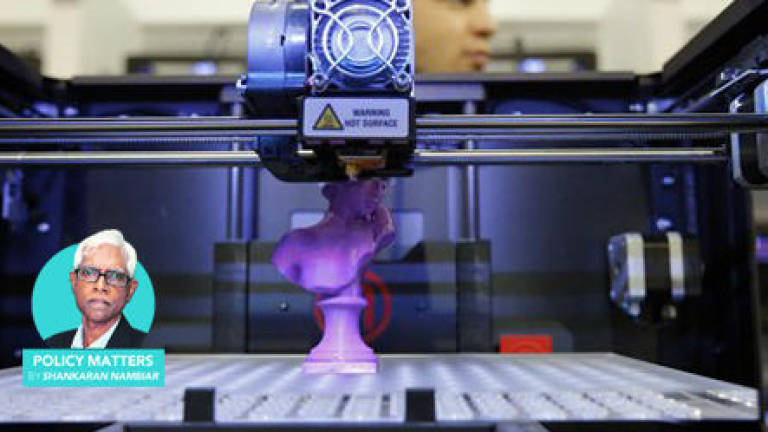Ride the new tech wave

THE MIT Technology Review has been coming out with its list of the 10 most important technological innovations for the year since 2001. The 2014 list featured agricultural drones, brain mapping, neuromorphic chips, genome editing and microscale 3-D printing.
What are their implications for the Malaysian economy?
To date 3-D printing is limited by the materials that can be used and inks that are available. It presently works only on plastic.
Jennifer Lewis, at Harvard University, leads research to extend the technology to print objects on a variety of material, even biological material. That includes the possibility of artificial organ creation.
On the side of biological/medical innovation, brain mapping technology has made possible a three-dimensional atlas of the brain, with details that go down to the actual size of cells (about 20mm). This could be lowered to 2 micrometres.
Scientists will be able to define brain function and location to a level of specificity never before imagined.
No less exciting is genome editing. Having mapped the human genome, the next step will be to locate which specific genetic combinations or mutations are responsible for disorders like autism or Alzheimer's. A step ahead will be to undertake DNA engineering on chromosomes. This could lead to the modification of fertilised eggs, giving new meaning to the phrase, "nipping in the bud".
While drones have long had defence purposes, agricultural drones will extend the technology for civilian use. Drones are being developed to monitor defects in irrigation, soil change and crop disease.
The drones will be a big cost-saver over manned aircraft with imaging capabilities.
Coming to neuromorphic chips, we see how artificial intelligence (AI) shifts its own boundaries. AI has long been in existence, but with neuromorphic chips, we have chips that can anticipate the user's needs and execute the corresponding actions based on interpretation of sensory data.
Neuromorphic chips will push robotics up its growth curve. A robot could assess the floor that you want cleaned, decide how you want it cleaned, select the areas by order of priority and proceed with the task.
These innovations give some sense of how industry will move in coming years.
Malaysia is not a producer of technology, neither is it likely to be one for a long time.
Neither will Malaysia be engaged in reverse technology. We do not have the expertise to dismantle an iPhone and produce an equivalent smartphone.
We do not occupy the top end of the technology space. But we will be impacted as users of the new technology.
Malaysia can be the hub for companies that make and distribute such technology.
The question is: at what end of the scale do we want to be involved? Will we be happy with assembling machines as we are doing right now in the electronics industry? Or do we want to be more ambitious and move up the value chain, perhaps being involved in research and design?
In any case, Malaysia has to move up the skill chain to host technology-intensive companies of the next generation.
Two things have to be done in preparation for the introduction of the new technology. First, it is essential to produce a technologically competent workforce. Second, alongside having the necessary human capital we should be equipped with the next-generation infrastructure.
Infrastructure must cover communication facilities, connectivity and the necessary energy grid. Urban transport systems are essential but hardly sufficient as we move towards the next generation technology.
As far as the labour market is concerned, educational institutions must produce and increase the supply of "correctly-oriented" human capital. In other words, produce a workforce that is correctly oriented and right-sized.
The disruptions on the labour market will also have to be anticipated. It is likely that there will be an inadequate supply of high-tech labour coupled with a drop in the demand for medium and low-tech jobs.
The crucial scissors effect will come into play. You will be cut from both sides that work together.
In the case of the new technology, this will mean not producing enough workers where industry needs them urgently, and producing too many where they are not demanded. This will be combined with an overall decrease in the demand for labour due to advances in AI and robotics.
The consequences of the new technology are going to be severe.
This is the time for hard scenario planning.
Dr Shankaran Nambiar is author of "Malaysia in Troubled Times". The views expressed in this article are his own. Comments: letters@thesundaily.com